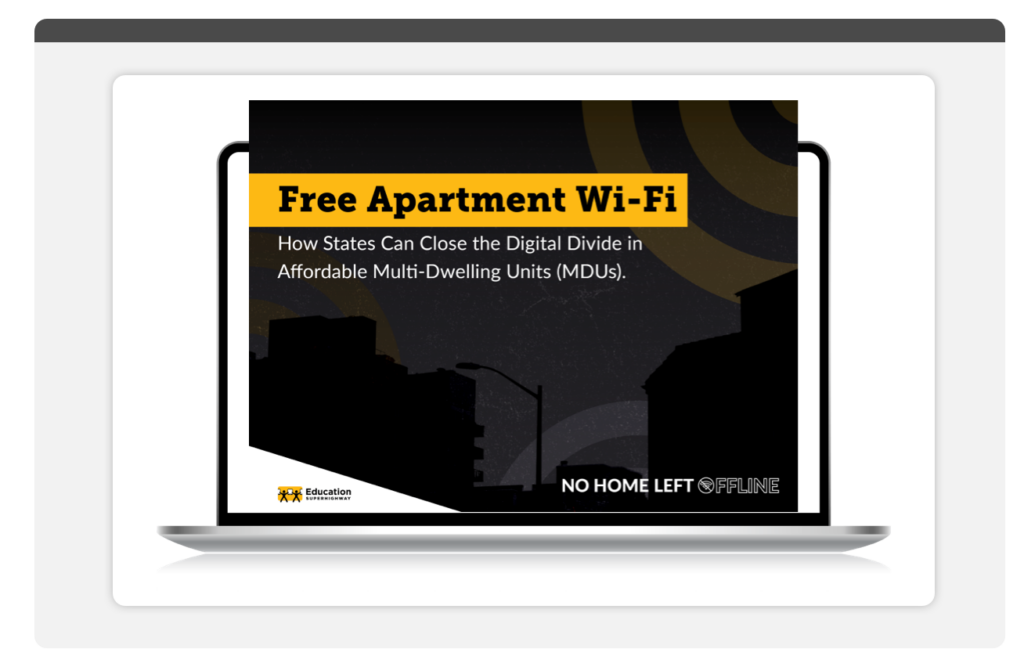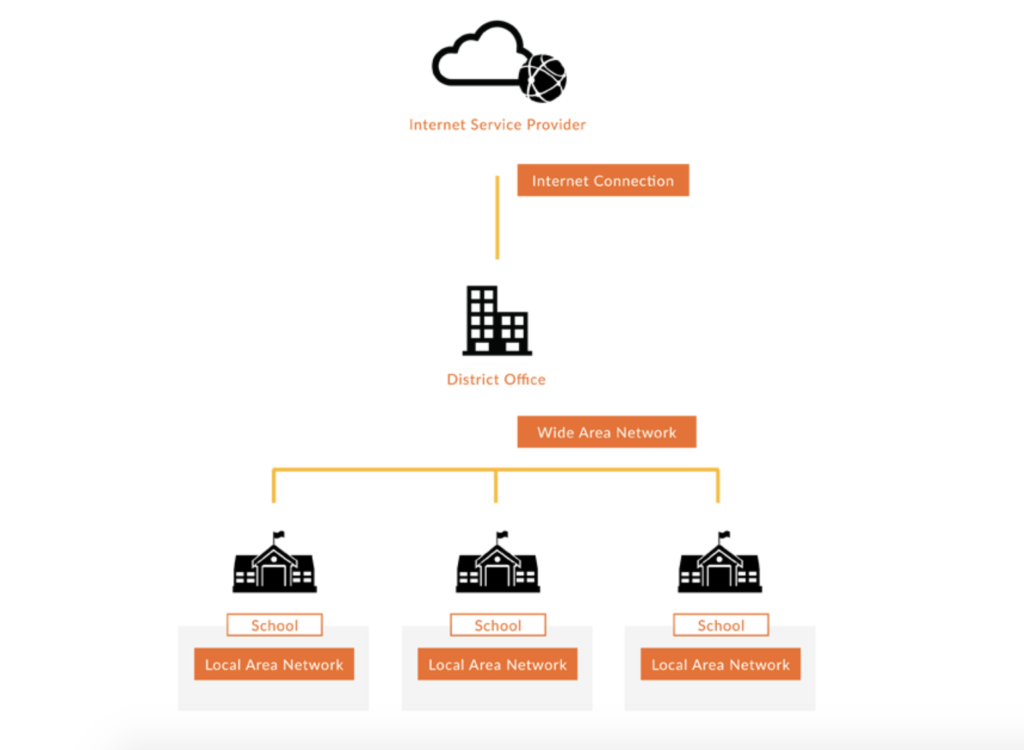For each of the three main pieces of a typical district network, the FCC has adopted connectivity standards. Scroll over network diagram for connectivity goals.
Robust broadband that fully supports digital learning requires that each part of a district’s network be working in unison and at full capacity. If one or more of the pieces of the network is broken or underperforming, then high-speed broadband and therefore rich, digital learning content cannot reach students’ devices.



